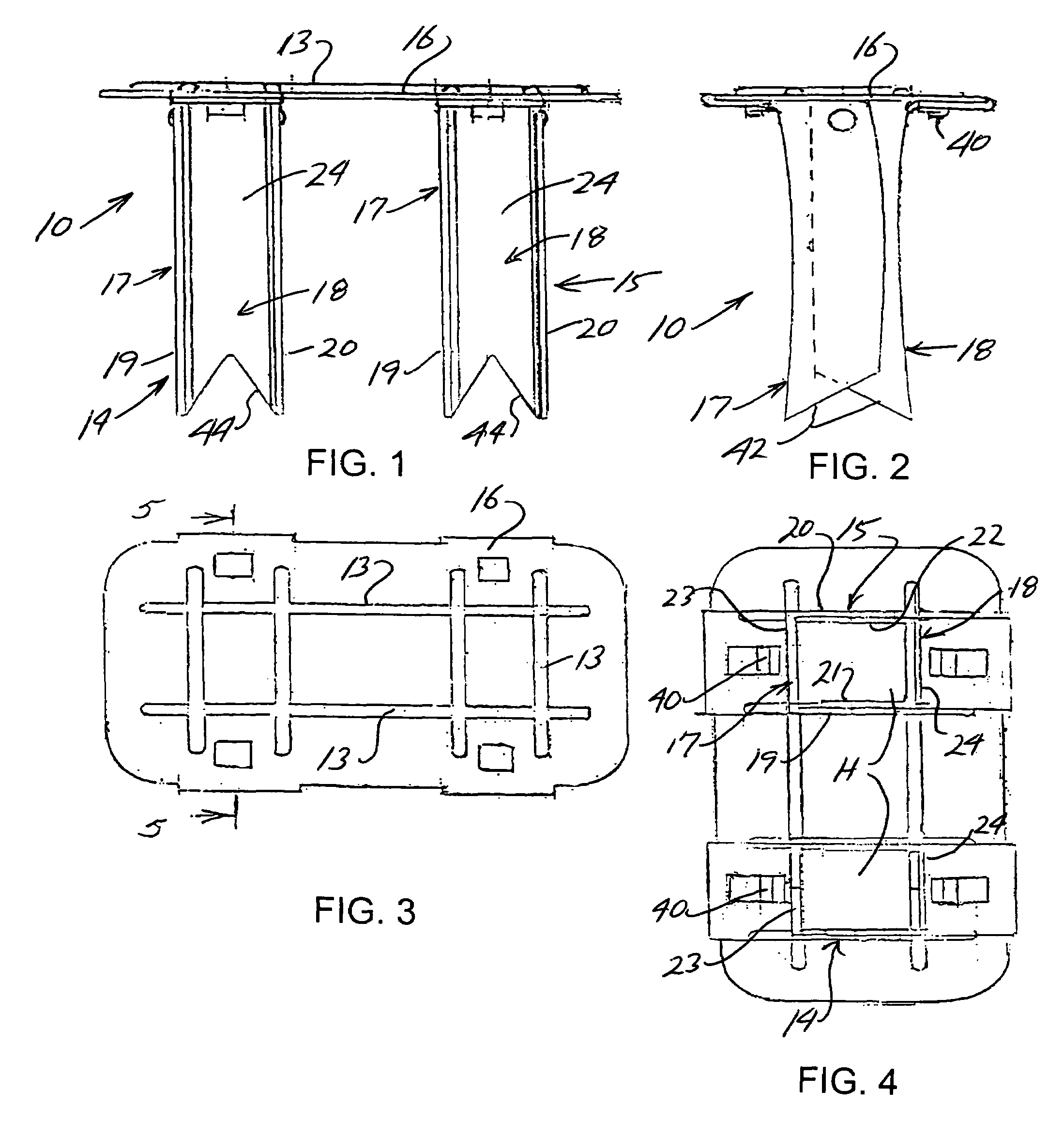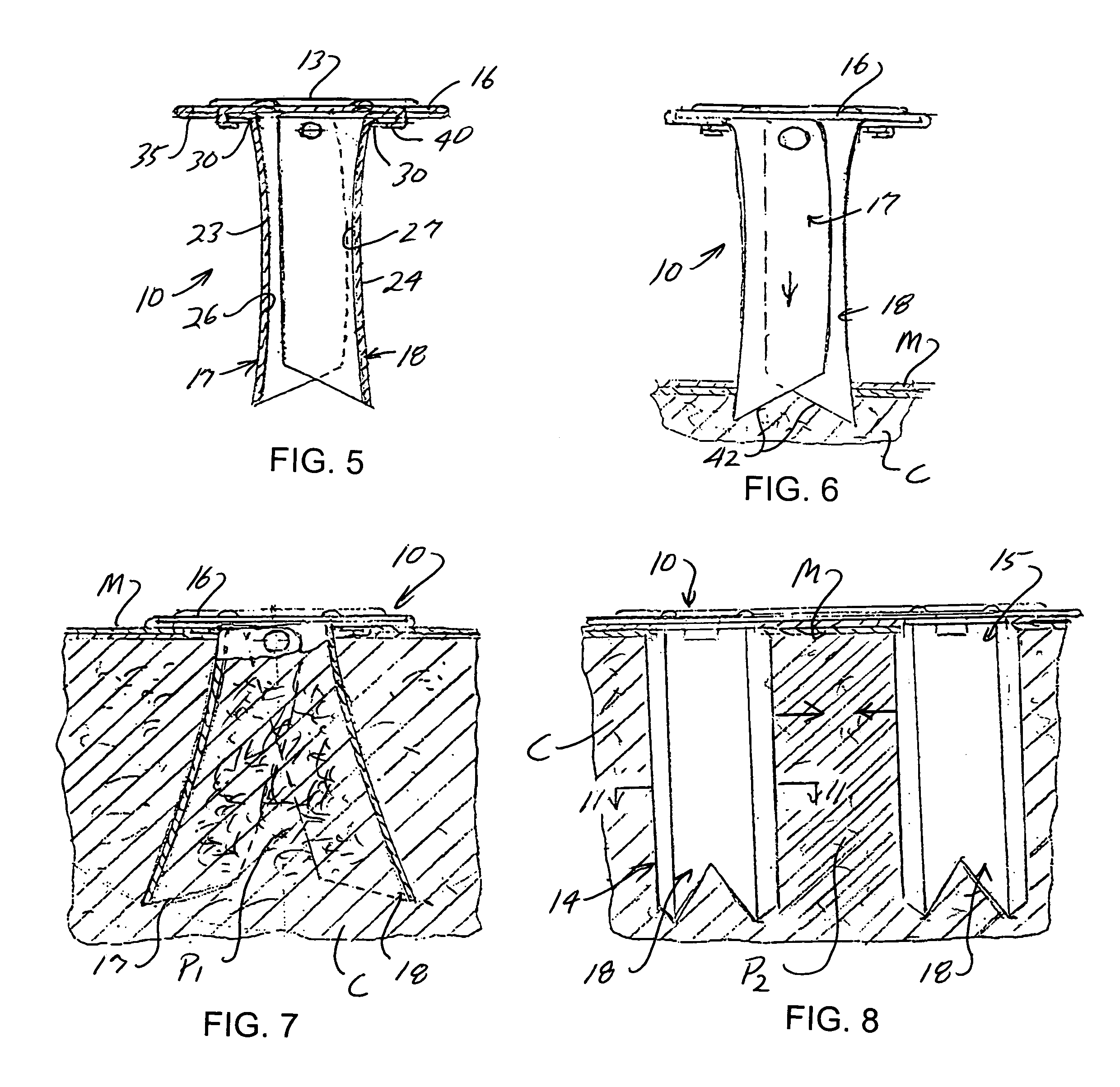Sheet metal fasteners with multiple spreadable shanks
a technology of sheet metal and fasteners, applied in the field of fasteners, can solve the problems of damage to seal membranes, and achieve the effects of reducing the distance between adjacent shanks, promoting deflection and spreading of legs, and increasing the overall holding capacity of fasteners
- Summary
- Abstract
- Description
- Claims
- Application Information
AI Technical Summary
Benefits of technology
Problems solved by technology
Method used
Image
Examples
Embodiment Construction
[0026]With continued reference to the drawing figures, a hollow sheet metal nail or fastener 10 is shown that is preferably integrally formed from a single piece or blank of metal 12, see FIG. 9, that has been stamped, punched or cut from a larger sheet of the metal. However, the inventive features of the present invention could also be embodied in a sheet metal fastener form of several blanks that are crimped or otherwise secured to one another.
[0027]The nail or fastener 10 includes at least two hollow shanks 14 and 15 that extend from a common enlarged head 16. The head of the fastener has upper and lower surfaces and is preferably reinforced by a plurality of raised ribs 13 along the upper surface so as to resist bending. The ribs are shown in FIG. 3 as extending across the length and width of the head.
[0028]Each shank 14 and 15 is formed of opposing legs 17 and 18 that are generally unshaped in cross section as shown in the cross section in FIG. 10 which is a cross section of le...
PUM
 Login to View More
Login to View More Abstract
Description
Claims
Application Information
 Login to View More
Login to View More - R&D
- Intellectual Property
- Life Sciences
- Materials
- Tech Scout
- Unparalleled Data Quality
- Higher Quality Content
- 60% Fewer Hallucinations
Browse by: Latest US Patents, China's latest patents, Technical Efficacy Thesaurus, Application Domain, Technology Topic, Popular Technical Reports.
© 2025 PatSnap. All rights reserved.Legal|Privacy policy|Modern Slavery Act Transparency Statement|Sitemap|About US| Contact US: help@patsnap.com



